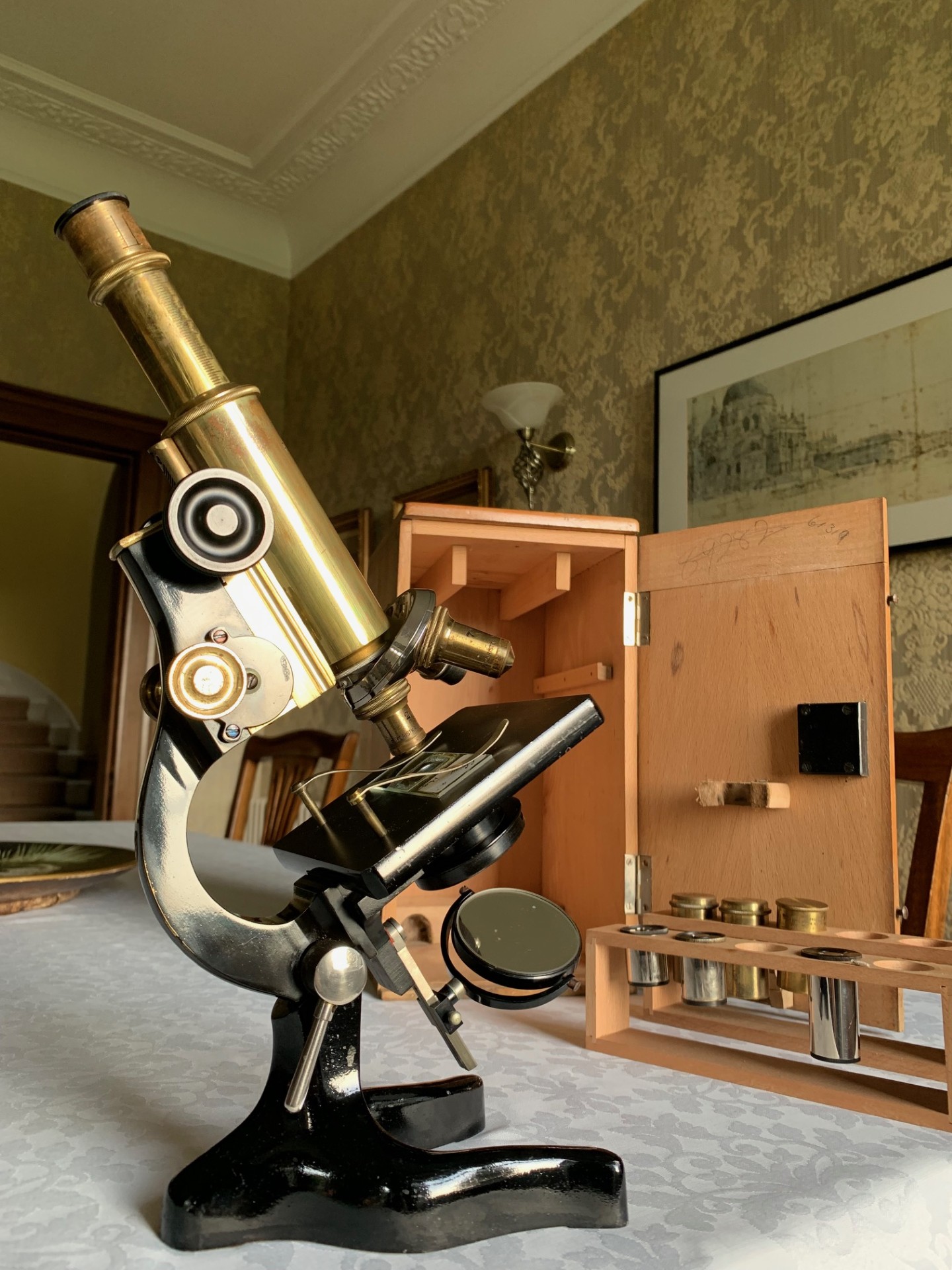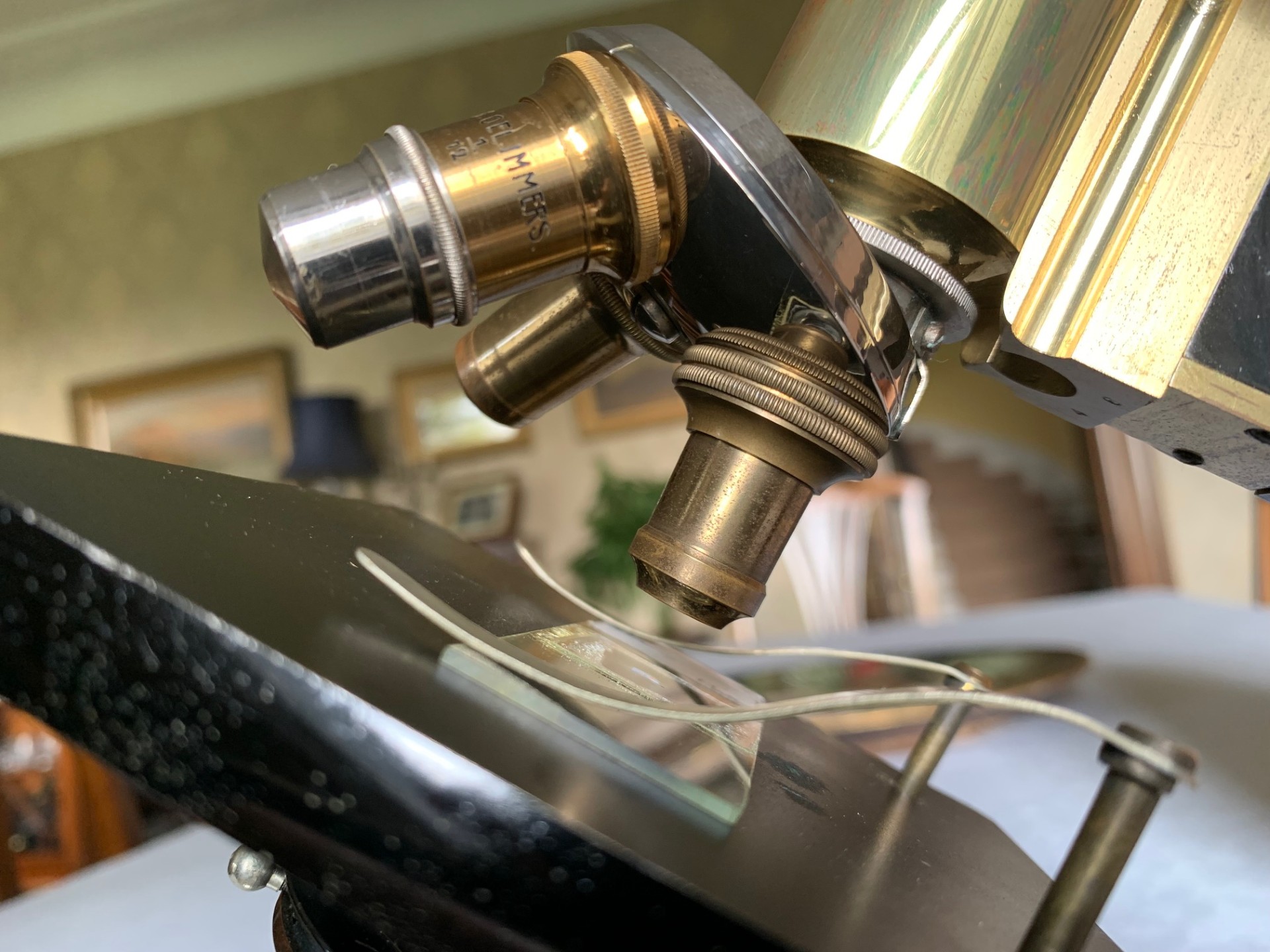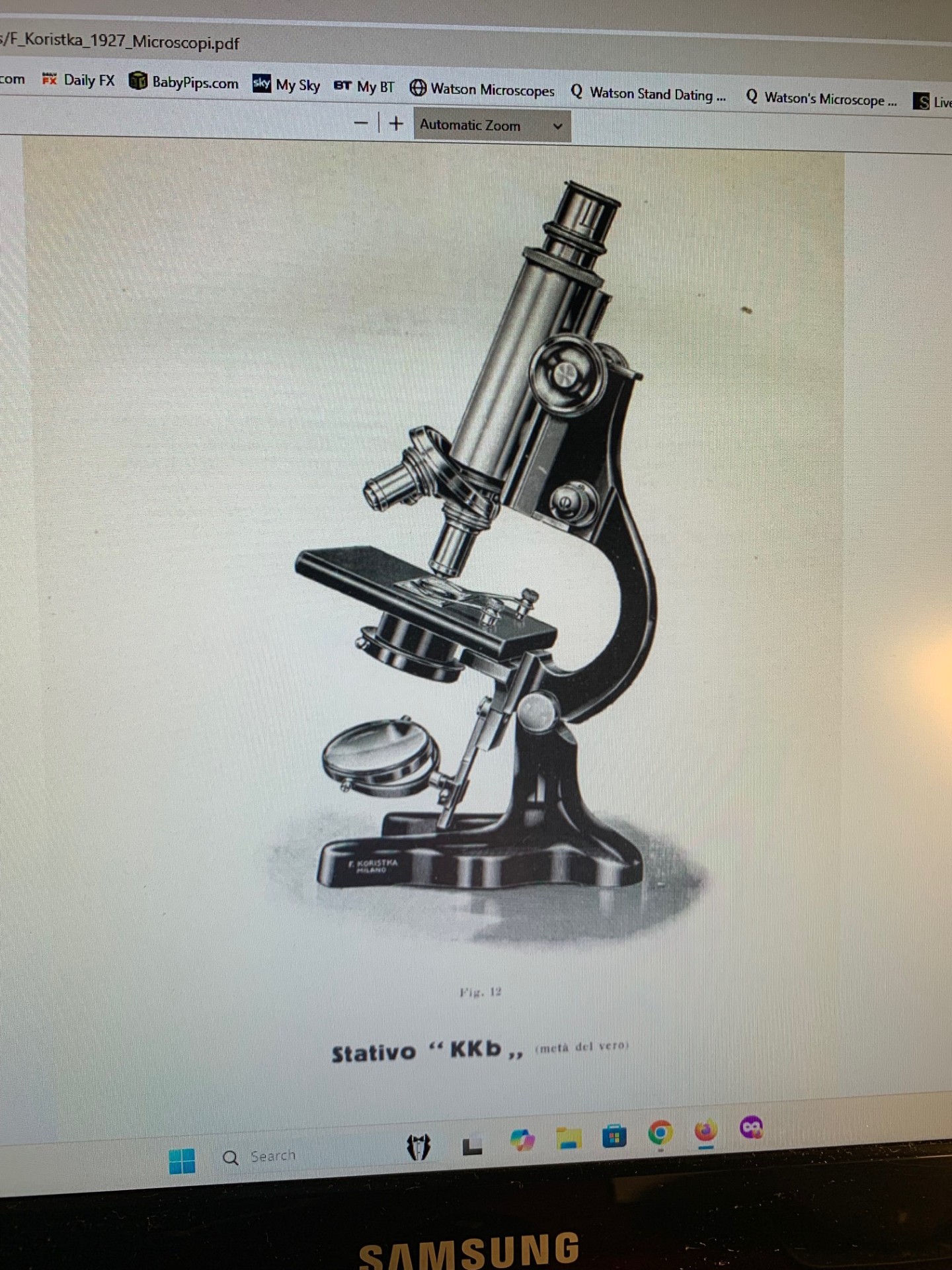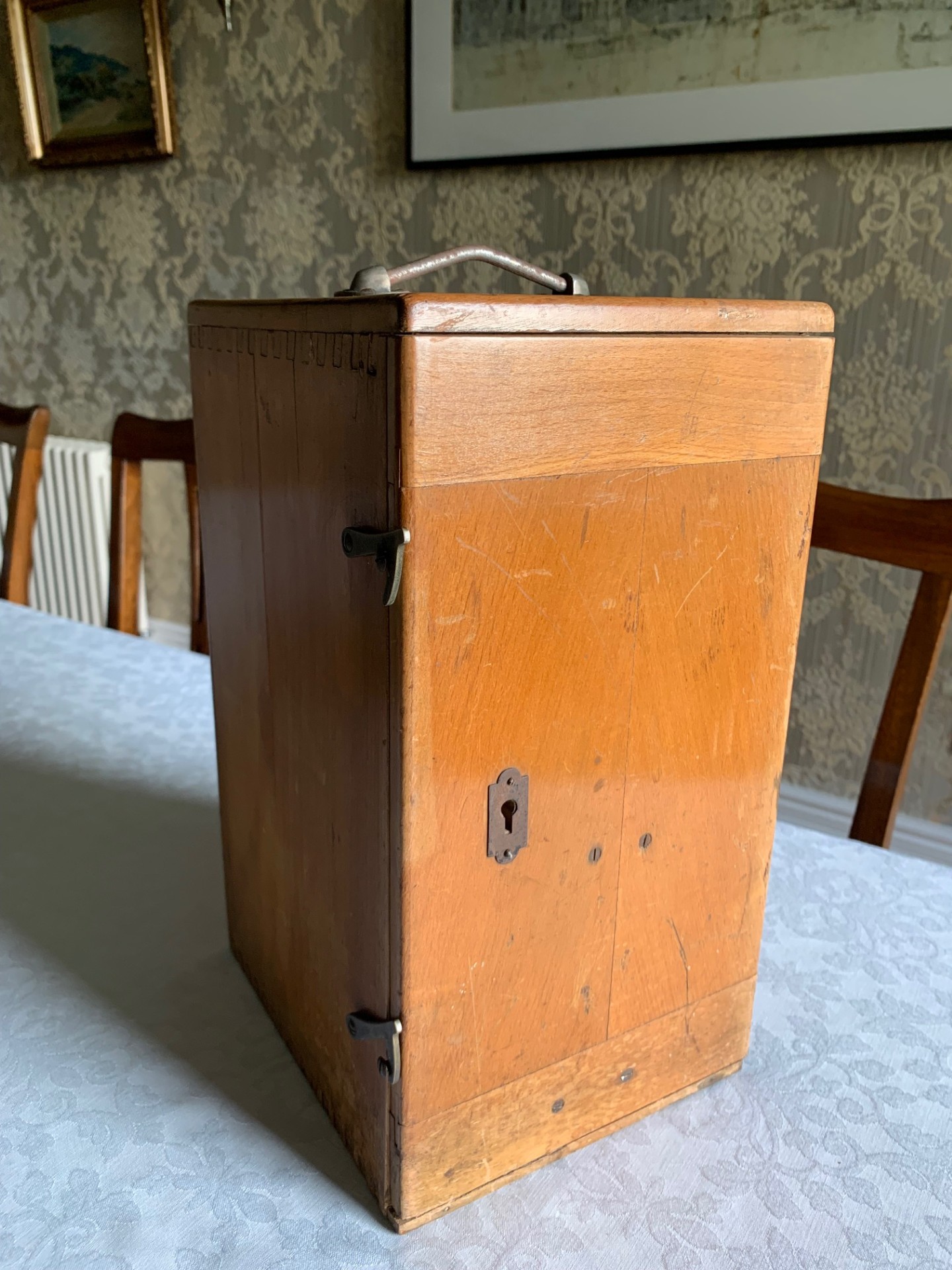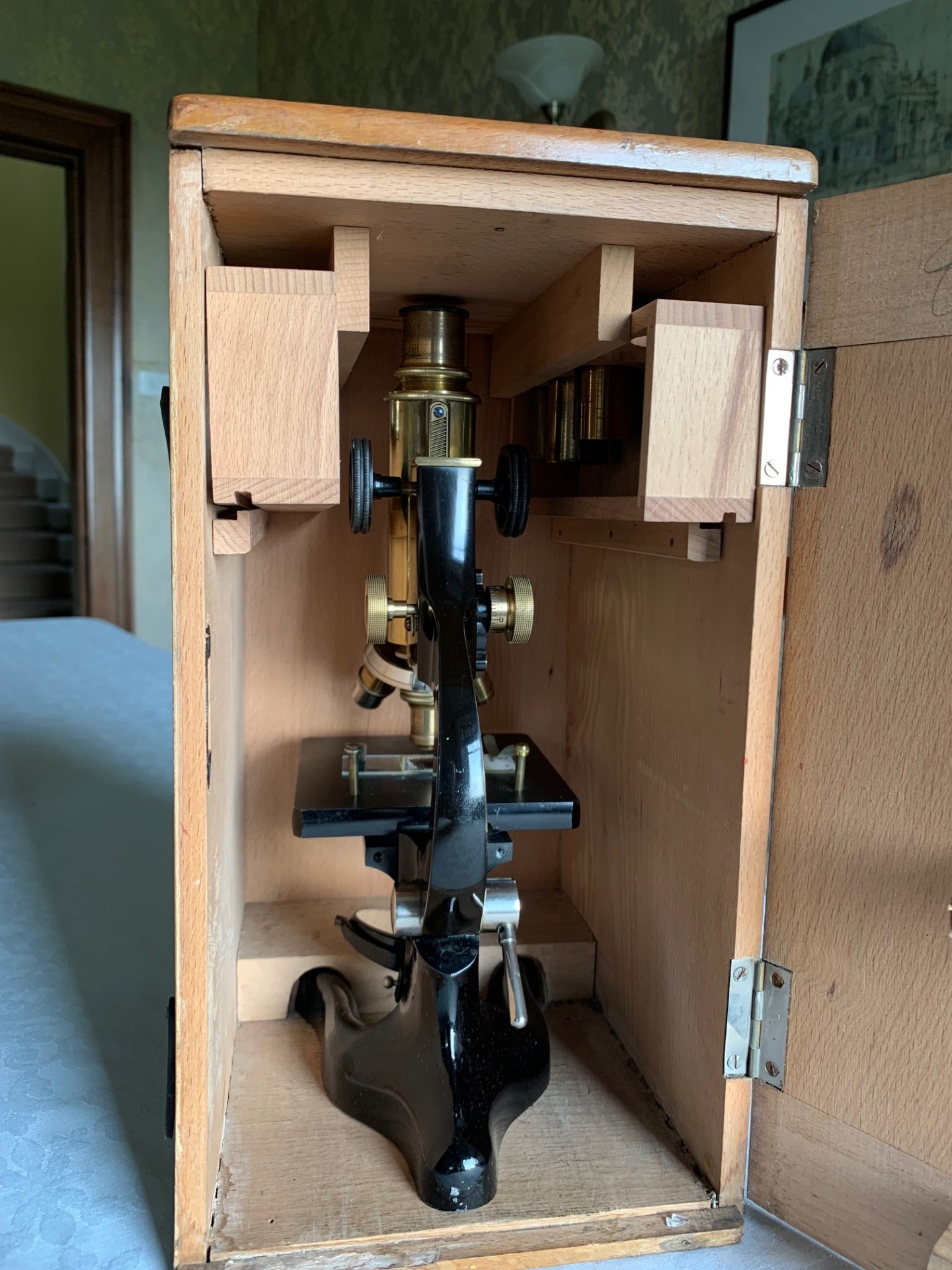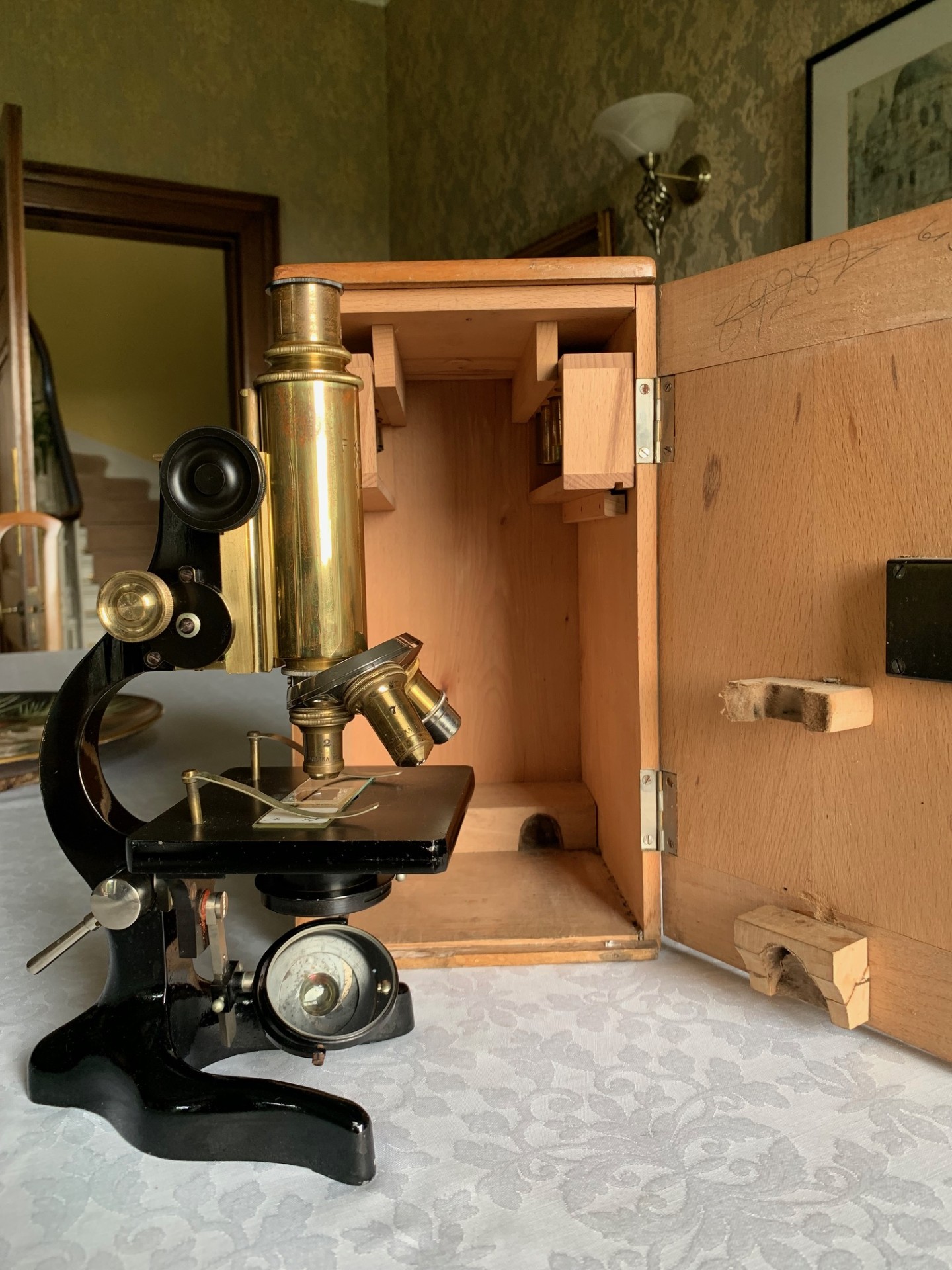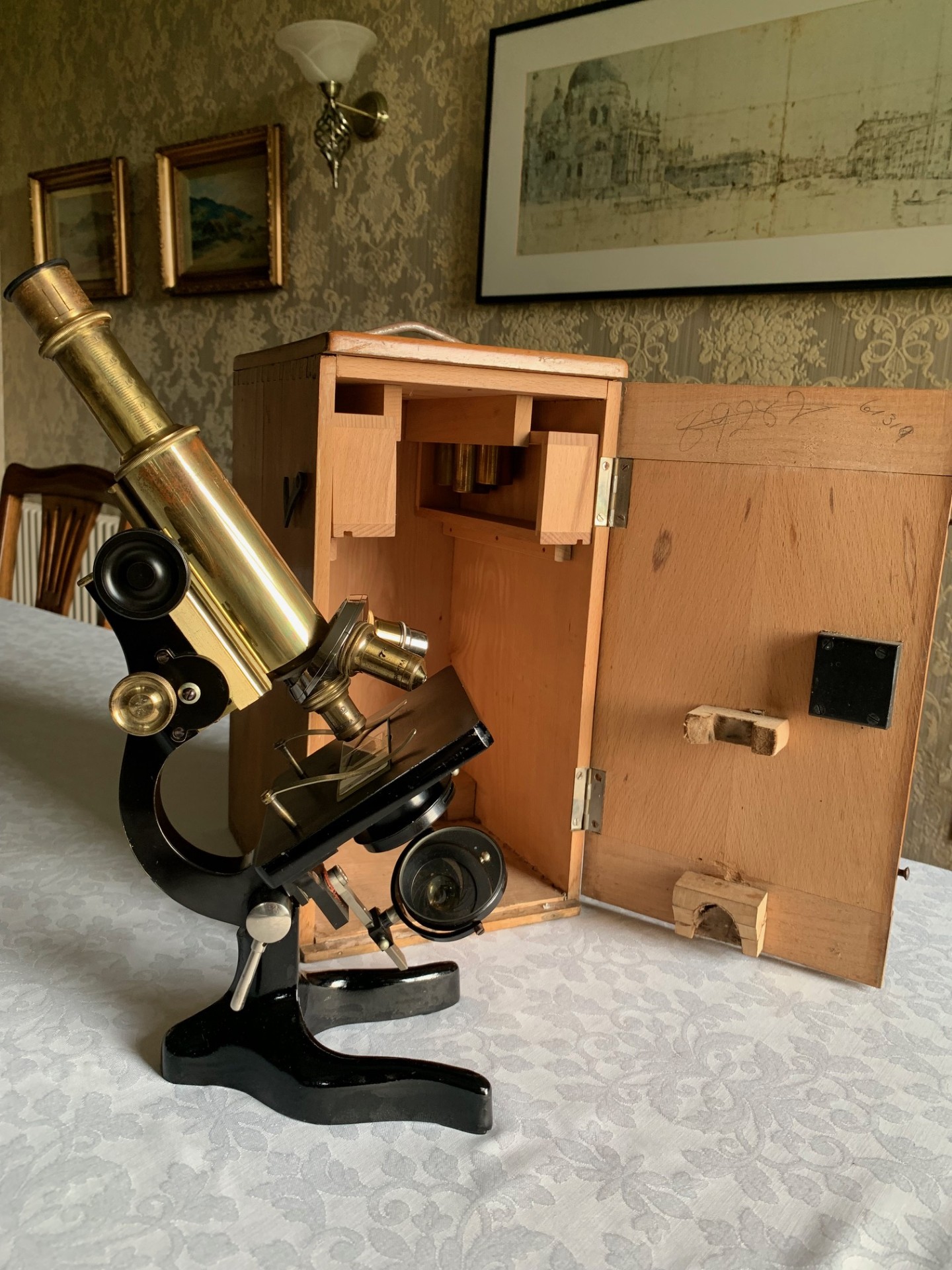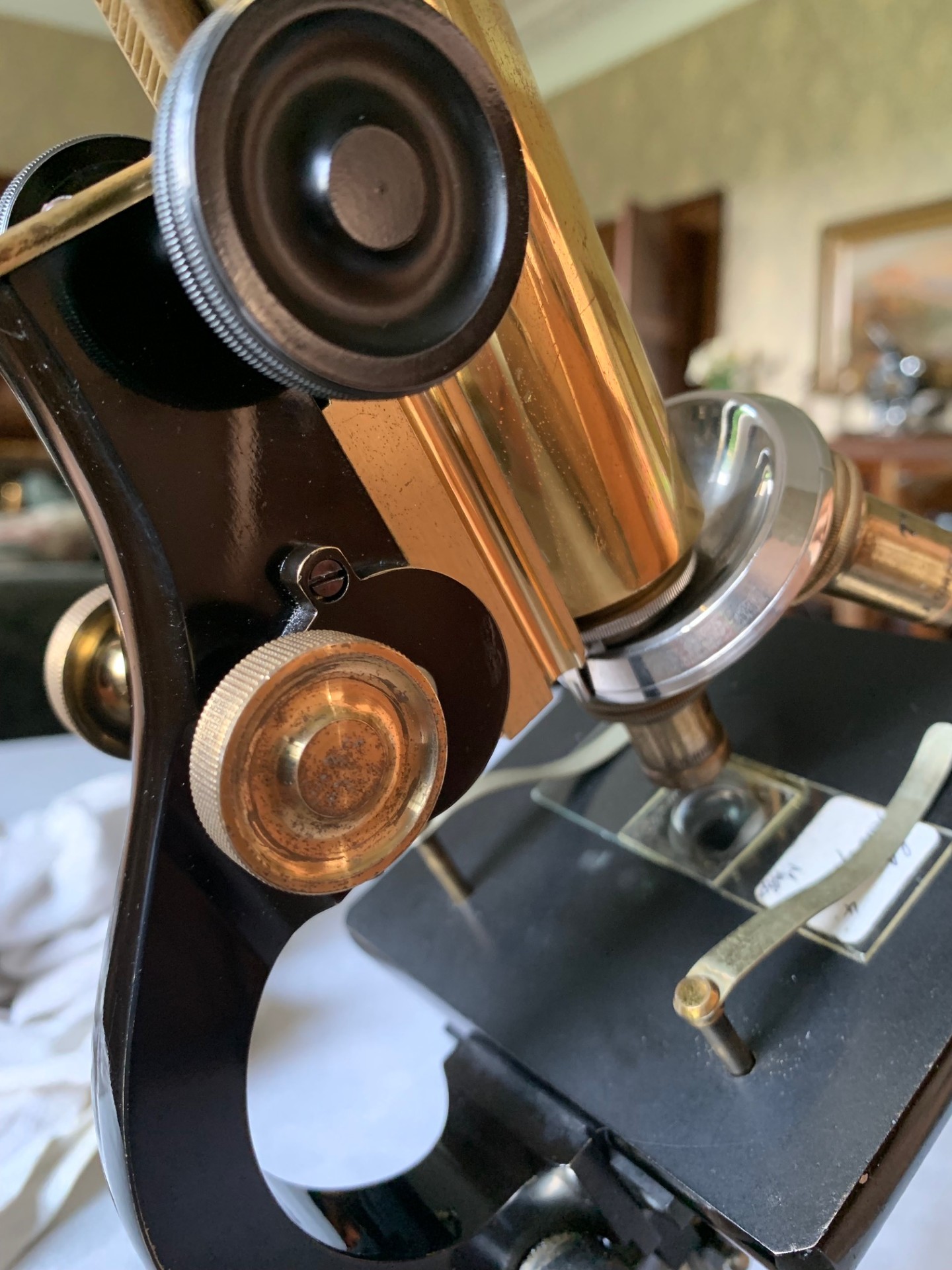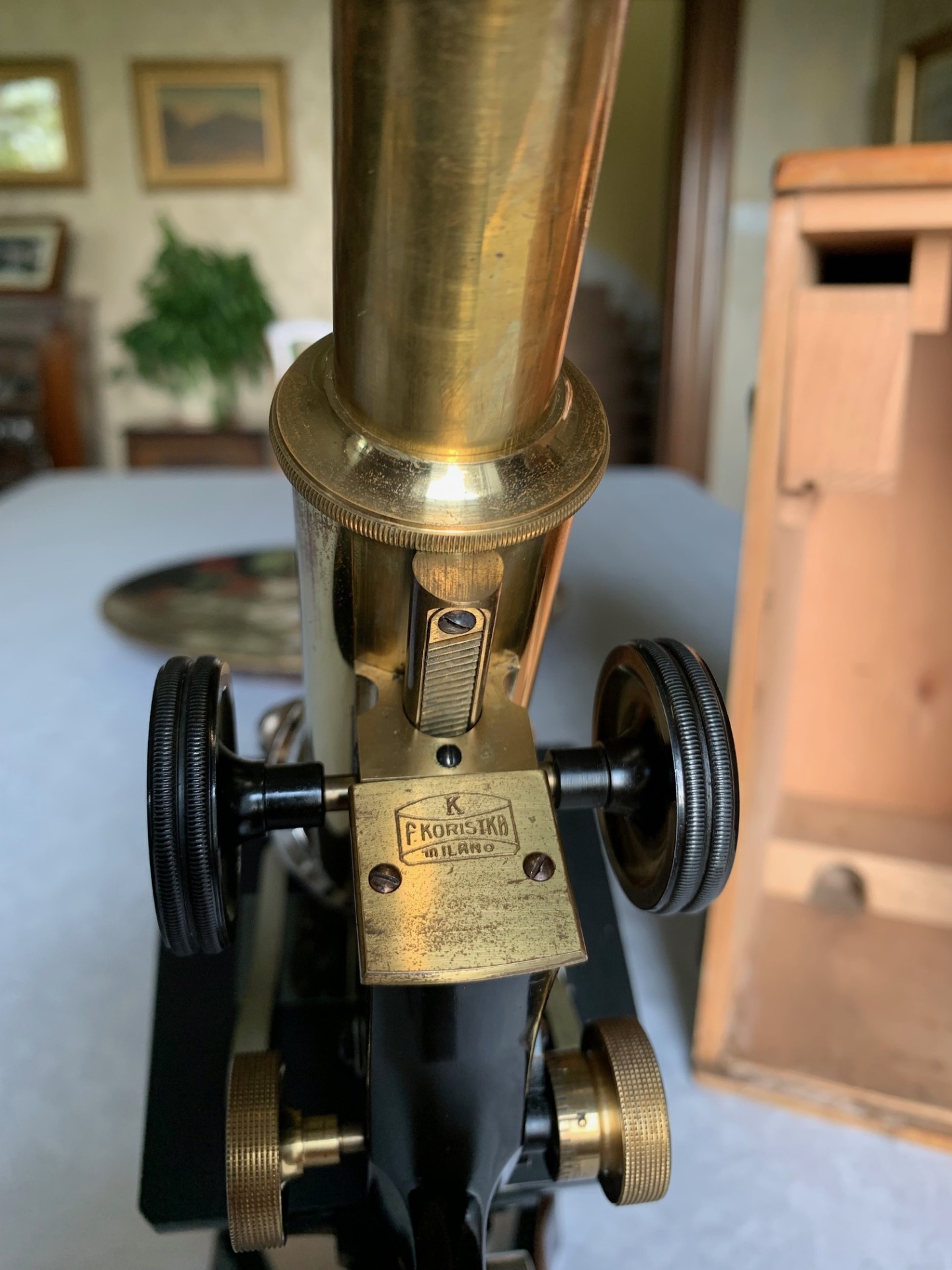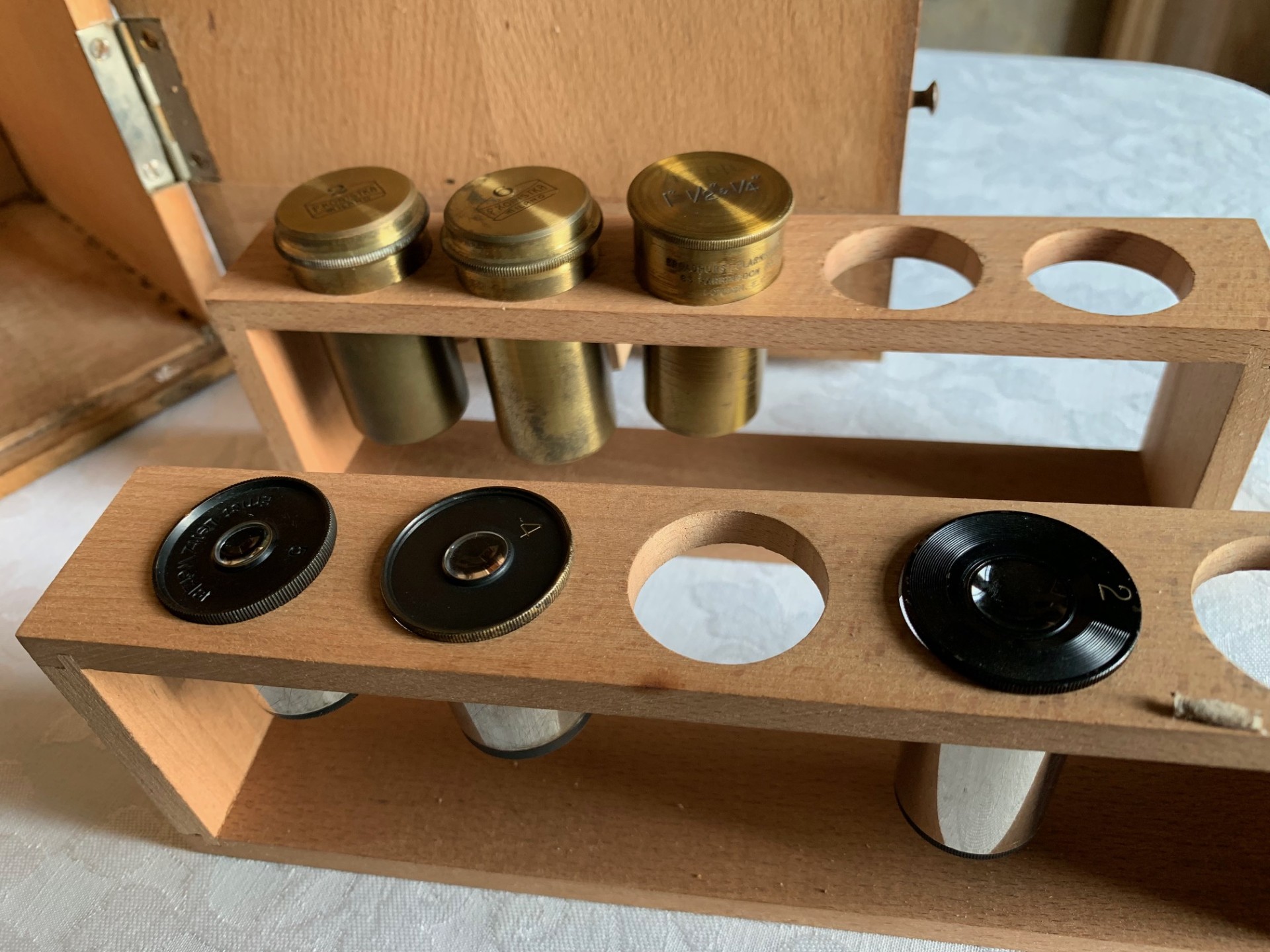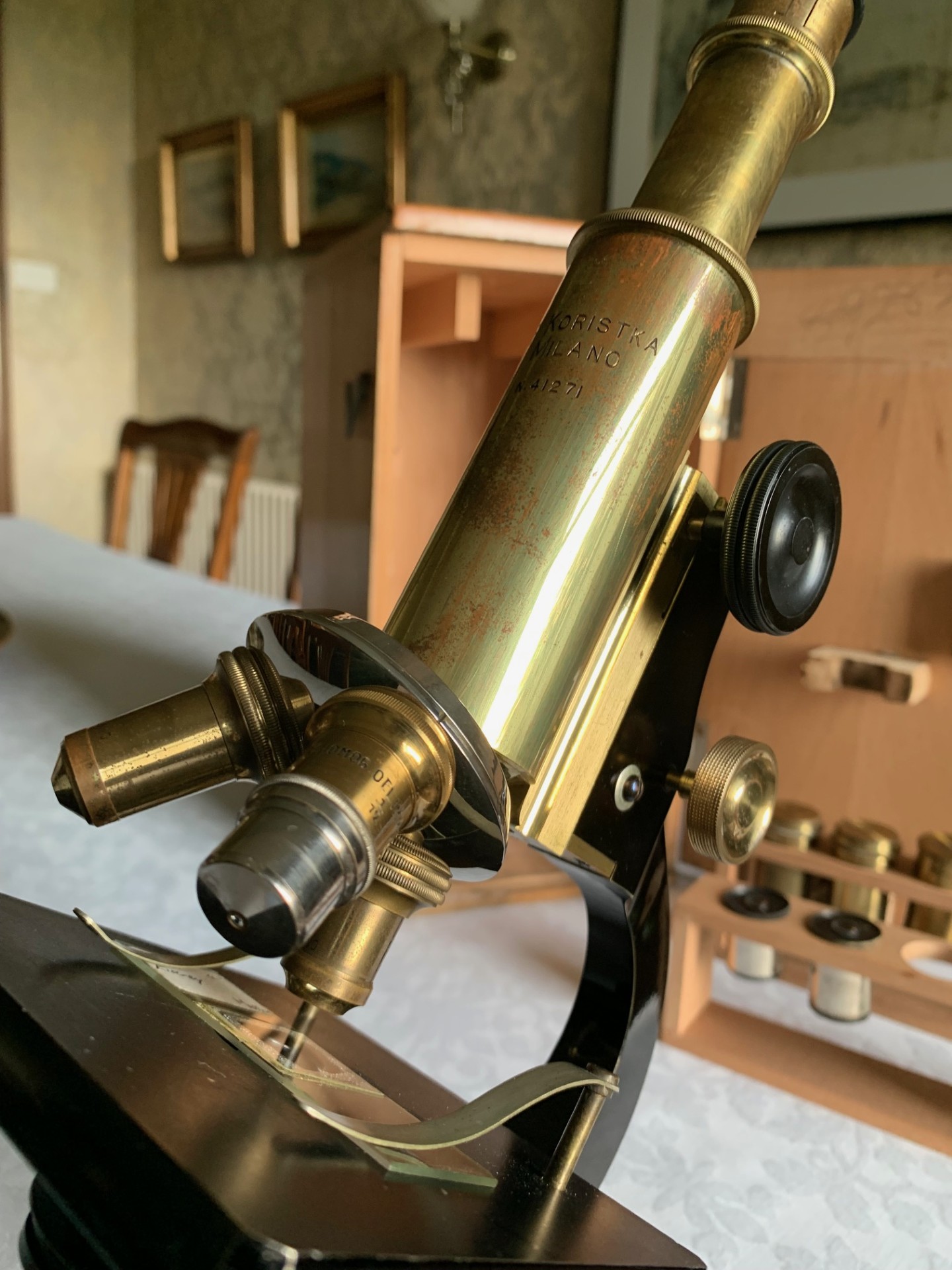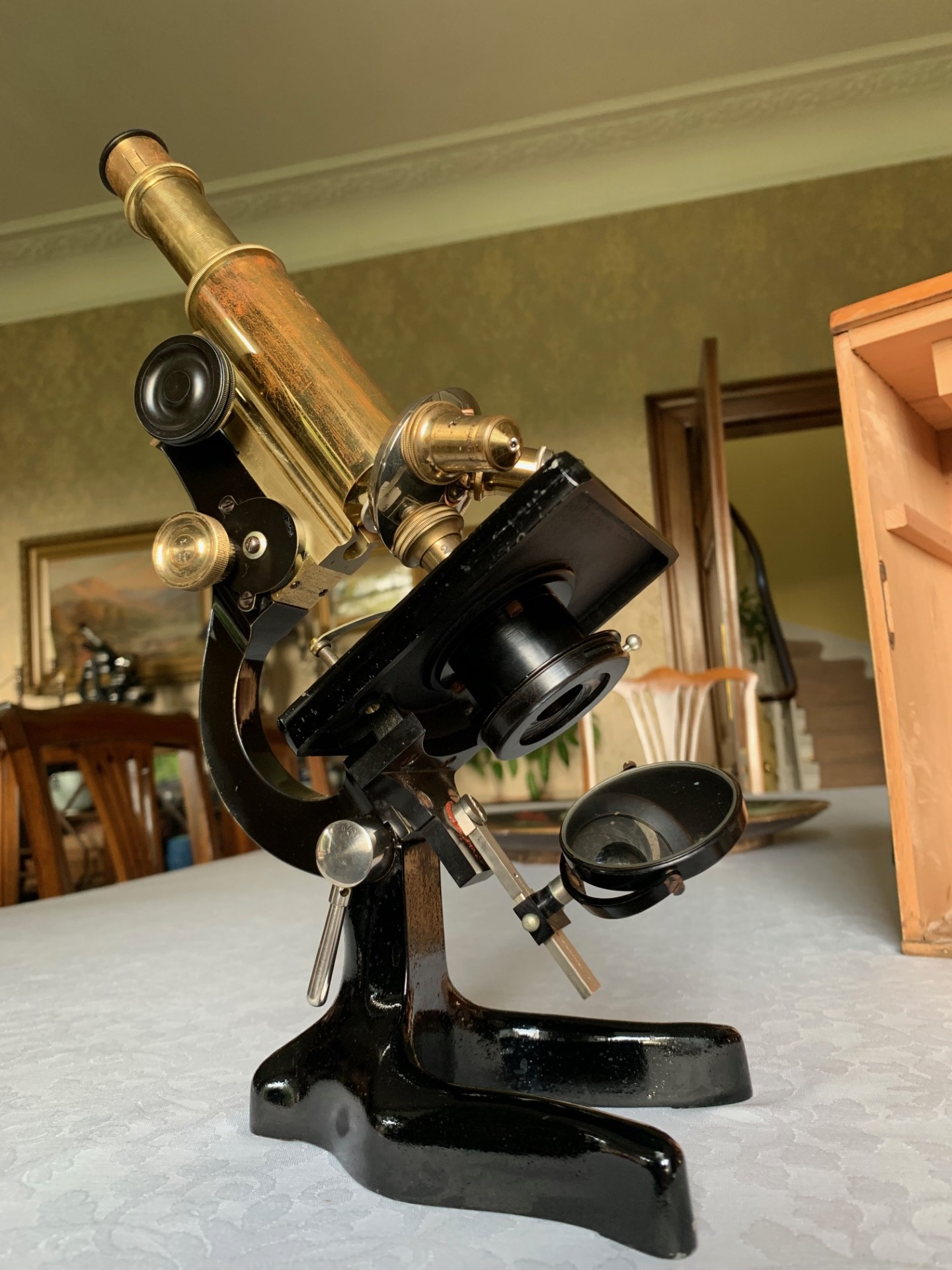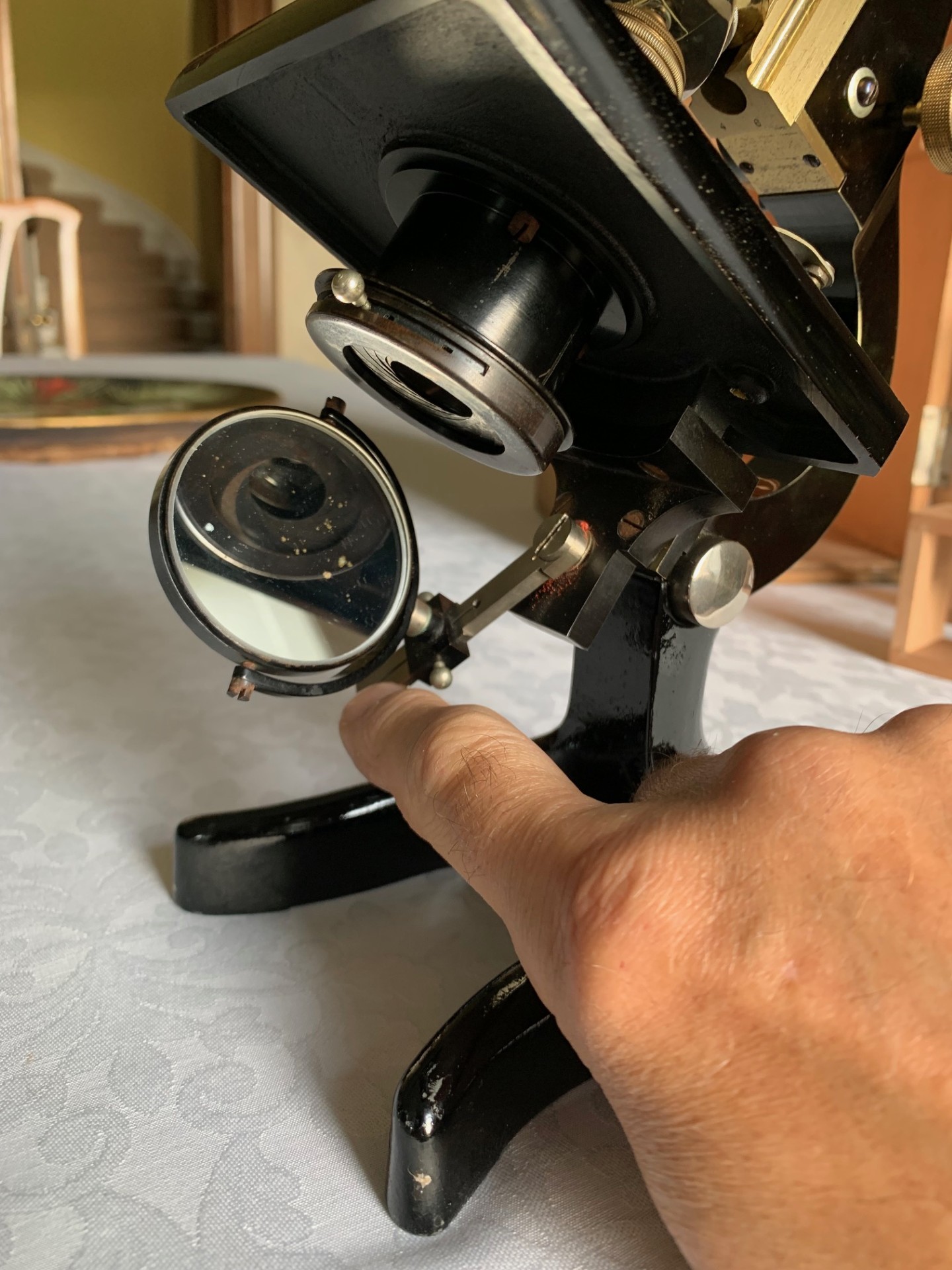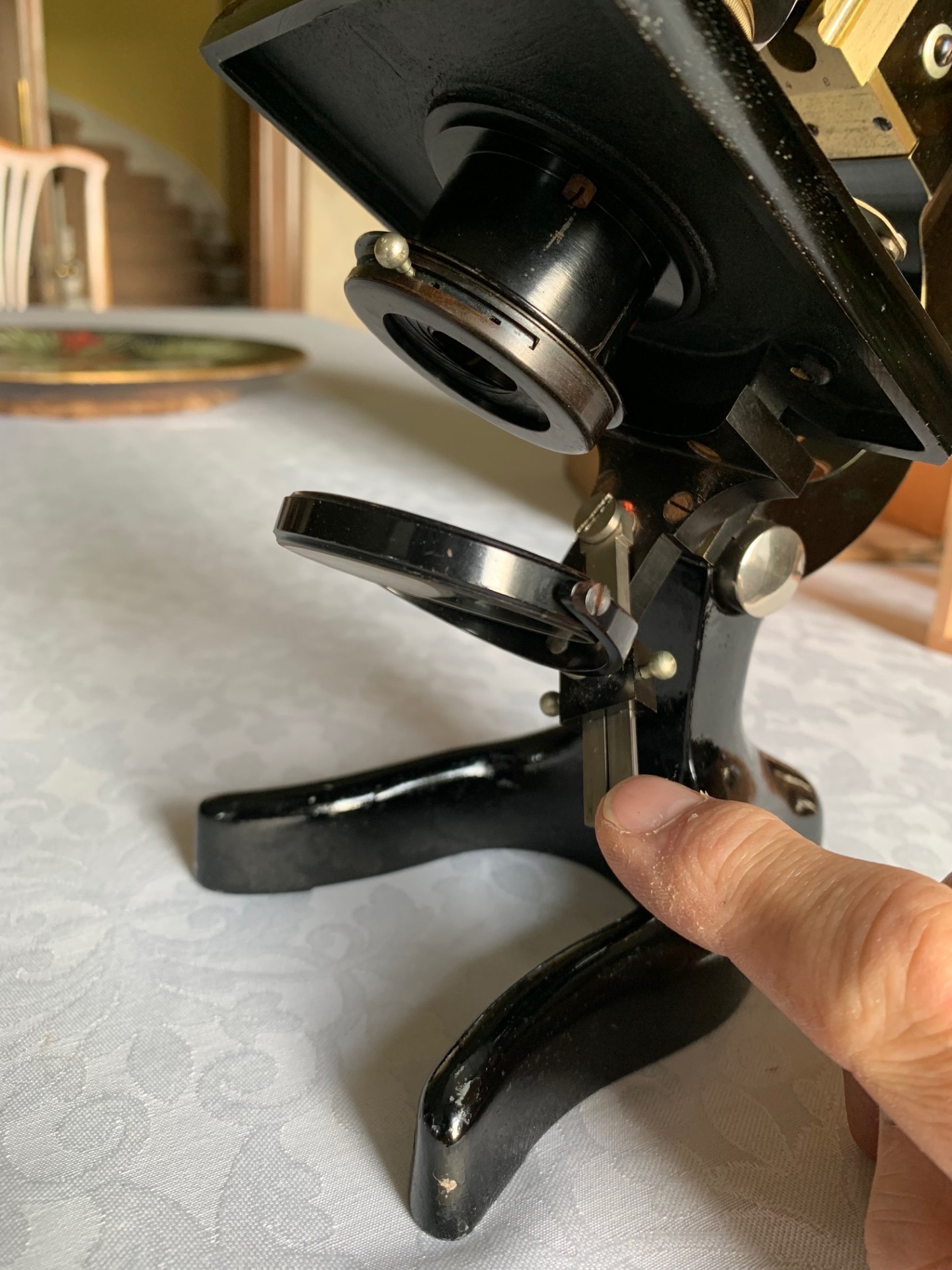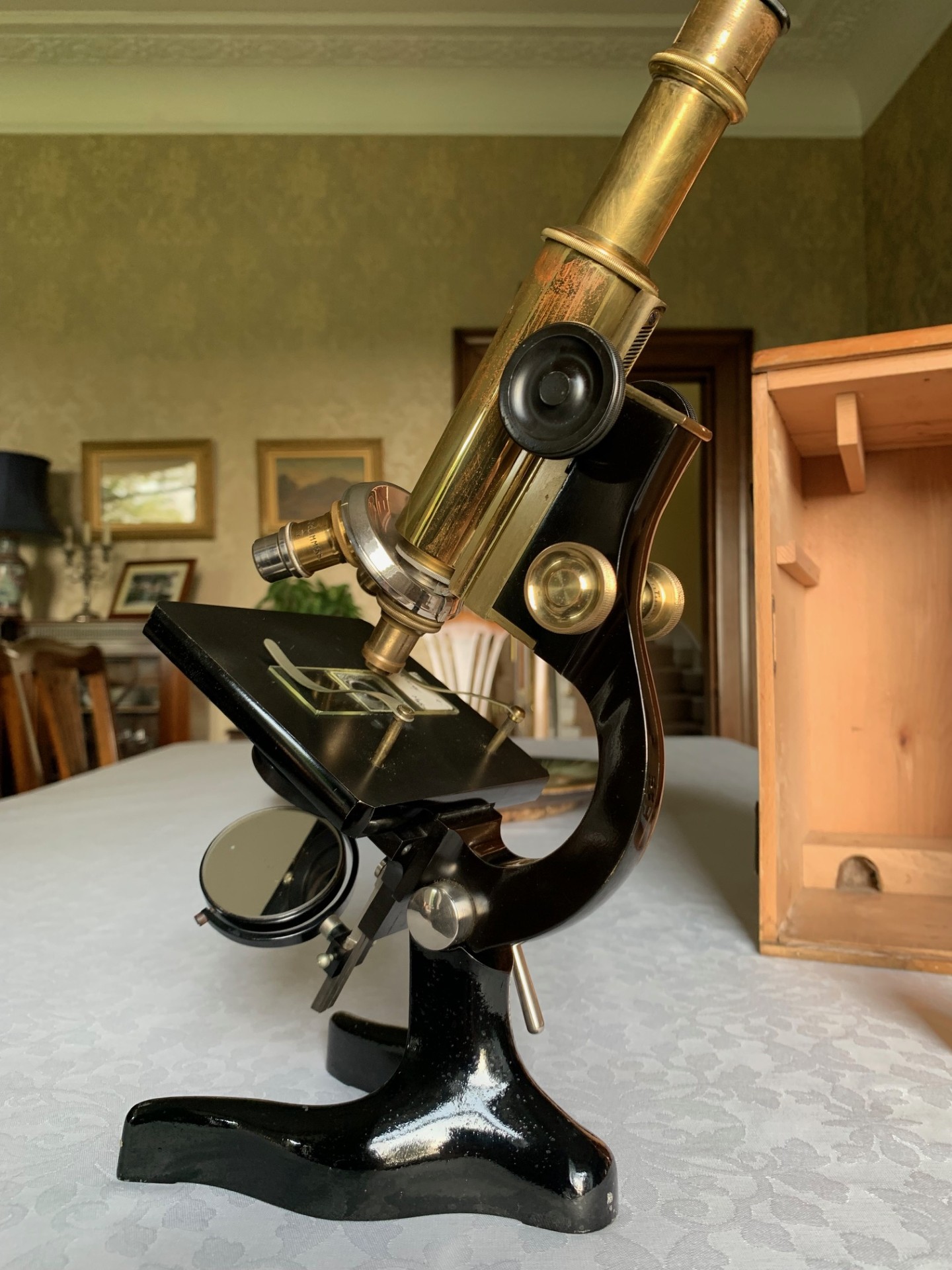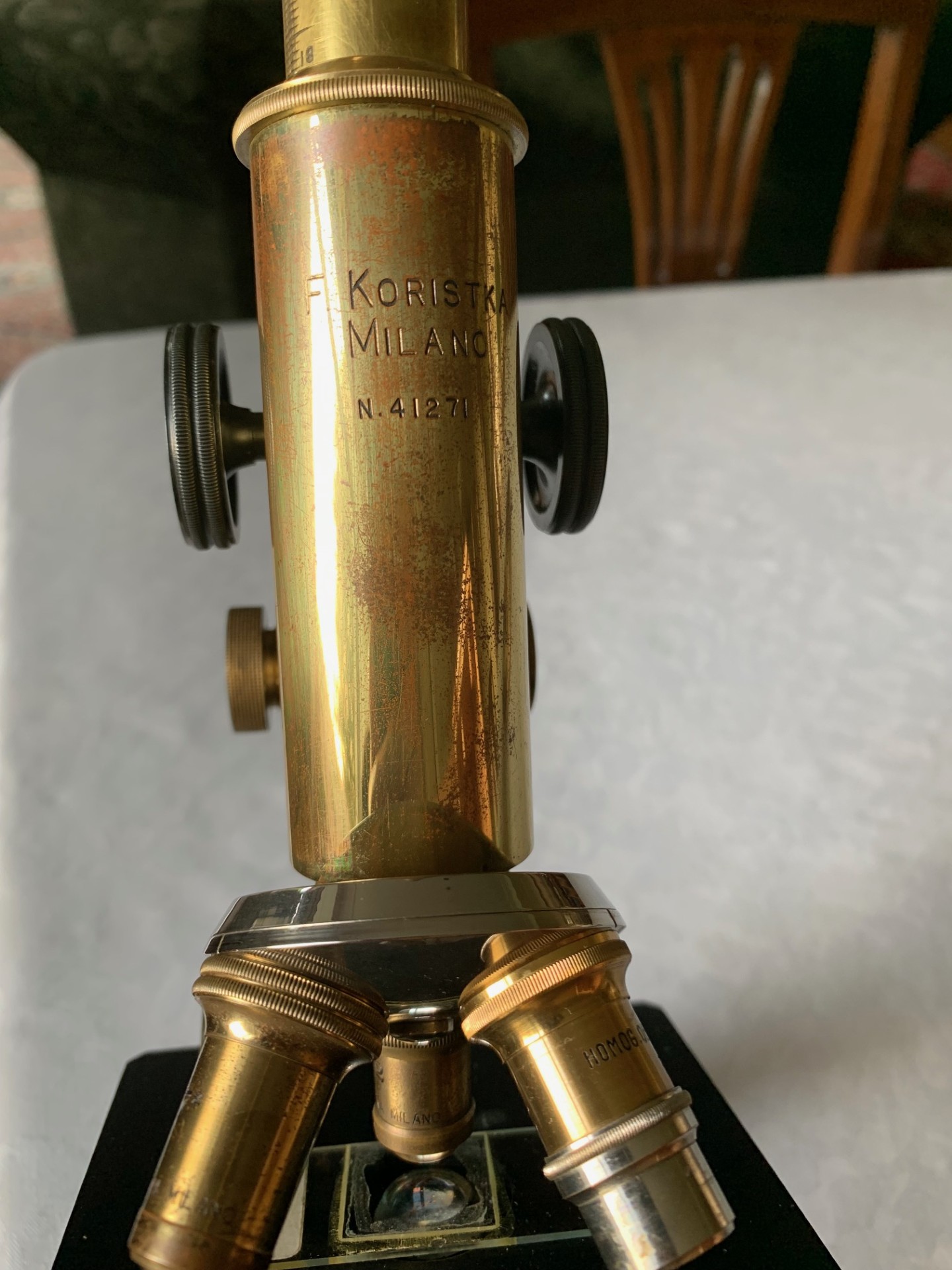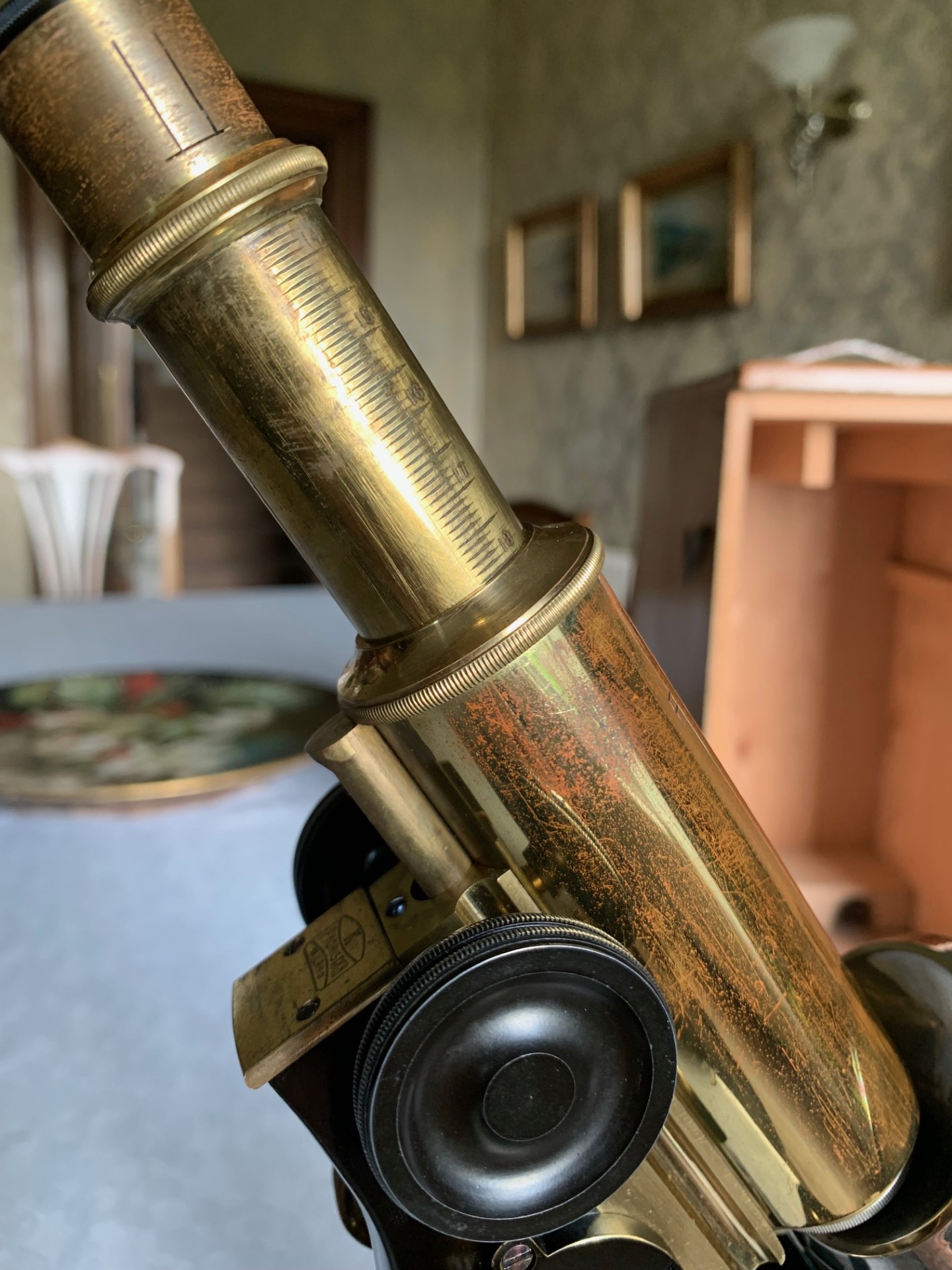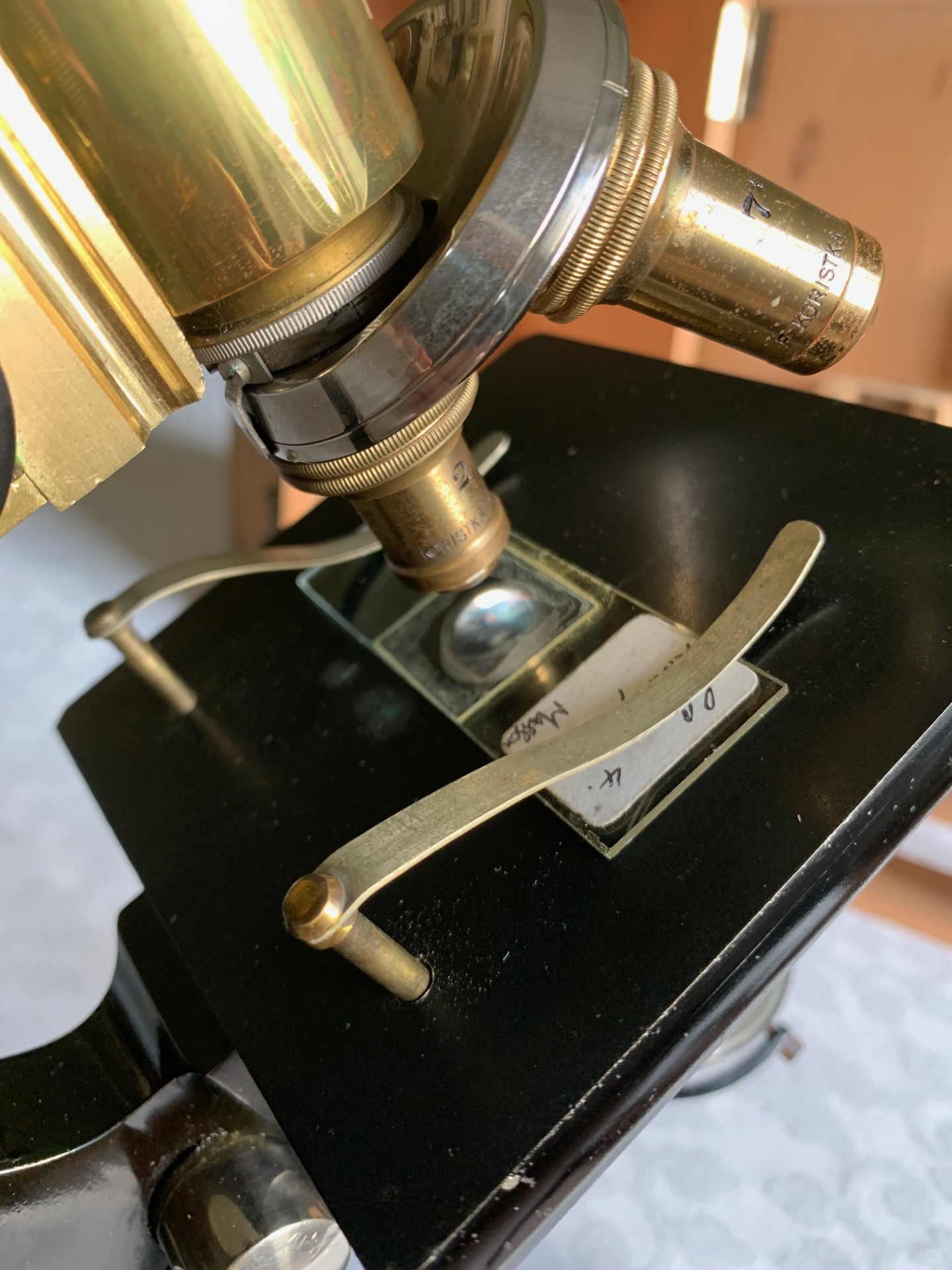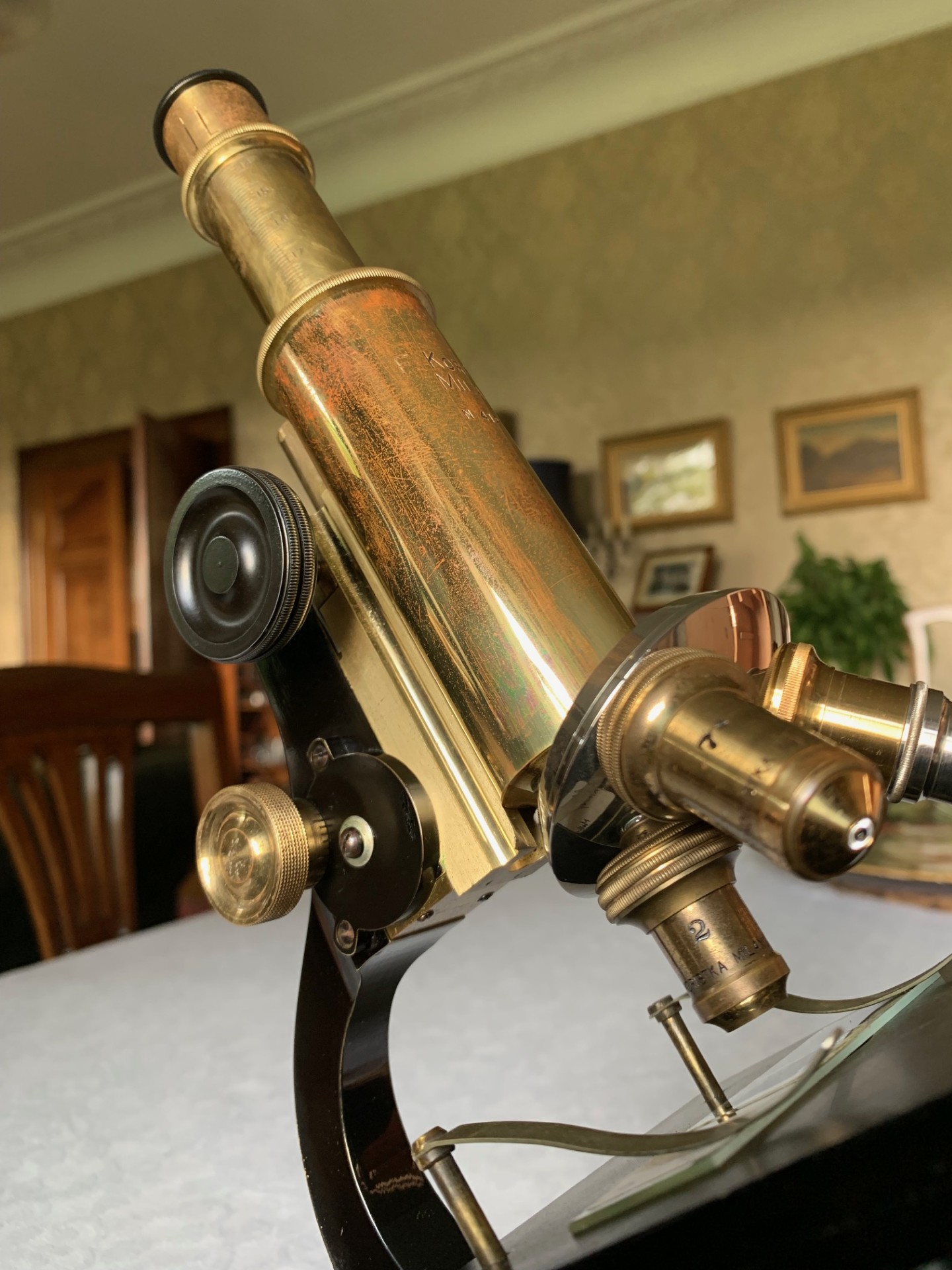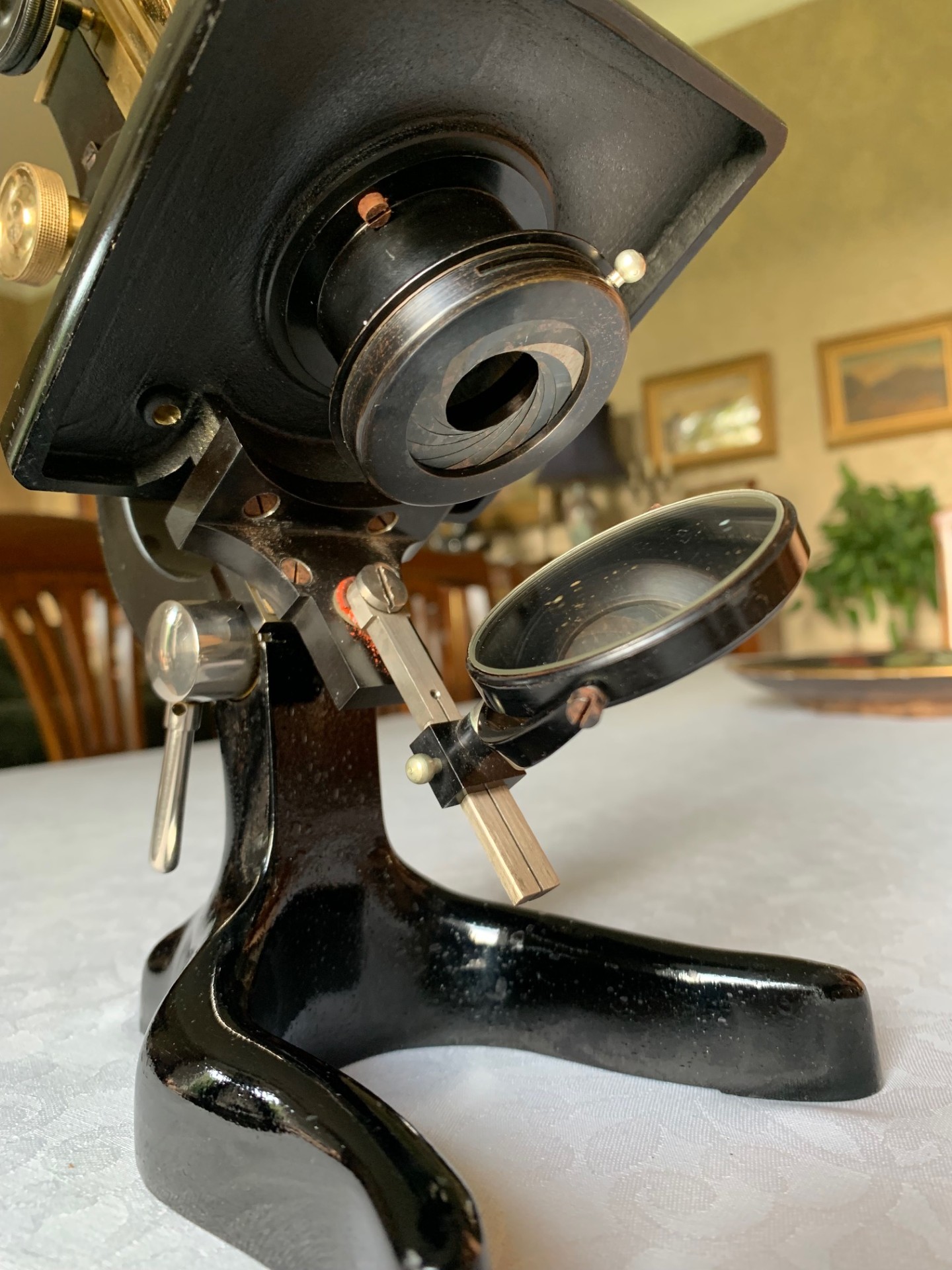Vintage F. Koristka of Milan – Brass Monocular Microscope – circa 1920s, Cased
£175
Generally good cosmetic condition example of an Italian-made brass monocular microscope by makers F. Koristka of Milan. Nice example with some age-related patination, working well, with a good set of period optics.
Circa
1927
Maker
F. Koristka of Milan, Italy
Country of manufacture
Other
Description
Offered for sale is a nice example of a brass-era instrument by Italian makers F. Koristka of Milan.
F Koristka (Milan, Italy) – source Microscope Museum
Francesco Koristka, Italian of Polish descent, was a maker of microscopes, cameras and other medical and scientific instruments that traded at Via S. Vittore 47 (1880 – 1895), Via Guiseppe Revere 2 (1896 – c1920), Corso Vittorio Emanuele 30 (1930s), and Via Ampere (1970s), Milan, Italy. The firm was founded in the early 1880s and the full name was Fratelli Koristka SA. Thanks to his relationships with Ernst Abbe, Koristka had the opportunity to build microscopes and photographic objectives using Zeiss’s patents, but he also built lenses of original design. Soon, the firm became one of the most important Italian makers of microscopes and one of the few Italian precision industries of the period. In 1928, two sons of Francesco Koristka, Gianfranco and Italo, continued the activity of their father with the company ‘Compagnia Generale d’ottica F.lli Gian Franco & Italo Koristka’, with headquarters in Corso Vittorio Emanuele, 30 Milano. In 1929, the firm was acquired by the Officine Galileo of Florence but continued to produce instruments under its own brand until the late 1960s.
From the construction, materials and quality of workmanship, my opinion is that this instrument dates to the late 1920s, with serial number 41271. There’s an image of this exact model which is shown as “stand KKb” from Koristka’s 1927 catalogue at the very end of the listing photo stream, which supports the late 1920s dating evidence. It’s lacquered brass and black paint scheme are in decent period condition, with some signs of tarnishing to the brass-work, but the overall look it about right for the period. All in all this is a quality instrument and a good collectable example of its period and type and being of Italian manufacture, it’s quite rare to find one of these in the UK.
In terms of condition, the brass-work is in quite good shape with some signs of age-related wear to lacquer finishes and some spotting here and there. The foot and limb are of solid construction also showing hardly any signs of wear or, chipping, thereby endowing the instrument with just the right sort of time-worn look.
Turning to the technical details, the construction is a brass Y-shaped foot with single upright to the pivot point allowing inclination as required. There’s a conventional upper limb, with coarse focus via rack and pinion with the main tube holding in position well. For fine focus, this is achieved via a separate brass thumb-wheels also located on the limb which operate a vernier screw lever/cam system against sprung resistance – this mechanism has been cleaned and lubricated.
With the optics, this microscope comes fitted with a graduated brass eyepiece draw-tube that sits inside a brass main optical tube. There’s four quality vintage eyepieces that with adequate illumination produce good images:
– 6x magnification – No. 2 – Koristka
– 8x magnification – No. 3 – Koristka
– 10x magnification – No. 4 – unbranded
– 12.5x magnification – Ernst Leitz, Wetzlar
The instrument has three period objectives and there’s a triple turret which rotates freely with positive feel as the objectives align to the optical axis. The objectives are all by C. Baker as follows:
– No. 2 – 10x magnification
– No. 6 – 40x magnification
– 1/12th inch oil immersion – 100x magnification
(all objectives have appropriate brass canisters)
Overall therefore, the range of magnification available with this instrument ranges from about 60x with the lowest power lens combination, up to around 1,250x with the highest power combination and use of oil immersion.
The stage is in ebonite, or similar hard material. It’s fitted with a twin brass slide clips for holding slides steady which work very well.
Turning to the sub-stage, we have an Abbe type condenser with iris in a friction-fit ring mount. Lighting is via a plano-concave mirror on a gimbal attached to a swinging arm as demonstrated, with period silvering that’s in excellent condition to both sides.
The instrument’s controls have been gently cleaned and very lightly lubricated and operate nice and smoothly. This instrument presents really well with brass-work that still catches the light and I hope that the listing photos do it justice. Overall, it’s in fine shape for its age with just the right patina for an example from this period. This instrument is essentially a collectable proposition and being of well-engineered Italian manufacture it’s quite unusual to find one of these in the UK. This example will also make a rather nice usable and display piece and will display rather fittingly in a library or home office setting, especially when set up with an appropriate antique slide.
There’s also the original storage case with this example, which is in good condition for its age with original carry-handle, internal racking and lock missing its key, so is fitted with good quality cupboard latches to keep the door closed.
Owing to the weight and delicacy of this antique microscope, it will be partially dismantled, very well wrapped for shipping and dispatched by insured courier upon receipt of cleared funds.
Please study the photos as they also form part of the description.
Thanks for looking – please also check out my other listings if you get the chance.
Ask the Dealer
Dealer information
 Arcboutant Scientific
Arcboutant Scientific
Arcboutant Scientific based in Glasgow Scotland, with an interest in scientific collectables dating back to 1988. Now making available carefully curated fine examples, principally of antique microscopes and associated scientific equipment by quality English and Continental makers, to collectors world-wide.



